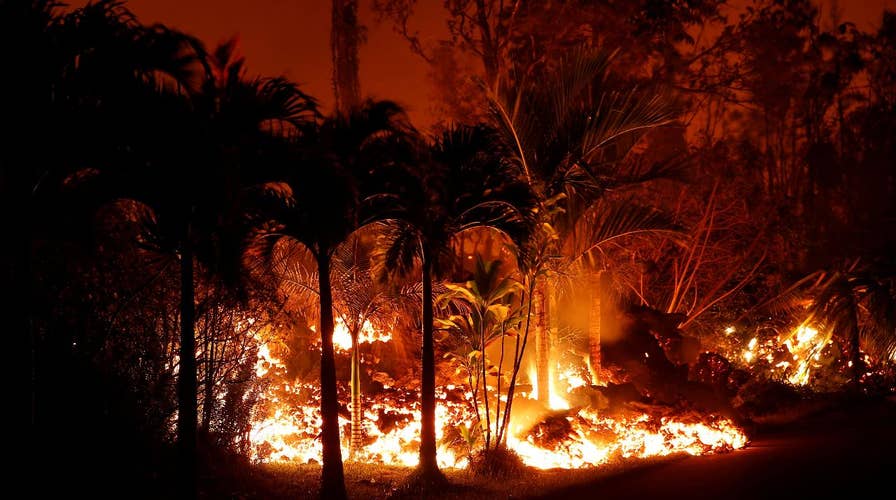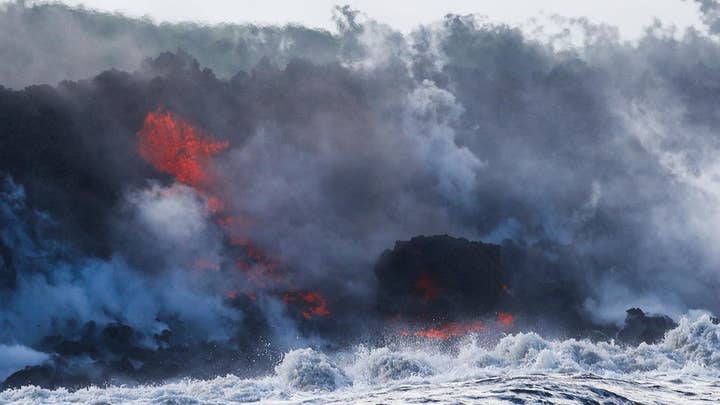More evacuations as volcanic activity intensifies in Hawaii
Jeff Paul has the latest on the volcanic activity affecting Hawaii's Big Island.
HAWAII – Lava bubbling to the surface on Hawaii’s Big Island is the hottest and most fluid it’s been since Kilauea erupted four weeks ago — measuring at least 1,652 degrees Fahrenheit with no upper limit in sight, a volcanologist with the USGS warned Thursday.
Wendy Stovall with the U.S. Geological Survey told reporters that the actual temperature is likely even higher.
“It’s hard to get to the center, which is the hottest portion of the fountain,” Stovall said.
Stovall said scientists haven't been measuring the center but instead measured the pieces that have broken off and were in the process of cooling.
More people living on the Big Island have been advised to evacuate. So far, Kilauea has destroyed 82 homes and other structures.
Earlier this week, a fast-moving lava flow burned down 12 homes while lava fountains shot up to 250 feet into the air. The lava quickly spread across parts the Big Island on Wednesday forcing officials to order more evacuations -- this time in two coastal neighborhoods over concerns that flows could cut off escape routes and trap residents.
“Hawaii County Civil Defense decided to evacuate all of lower Puna to ensure that people would be able to get out,” Stovall said.
Officials said the lava destroyed the electric utility’s equipment on the highway which led to power losses at the Vacationland and Kapoho Beach lots.
“You are at risk of being isolated due to possible lava inundation,” the Hawaii County Civil Defense Agency warned.
Kilauea is one of the world’s most active volcanos. It has been erupting at its summit crater as well as in a string of fissures more than 25 miles long.
U.S. Marine Corps helicopters have been on standby and ready to evacuate residents should Kilauea block the last escape route.
Scientists say they have no idea when Kilauea will slow down.



